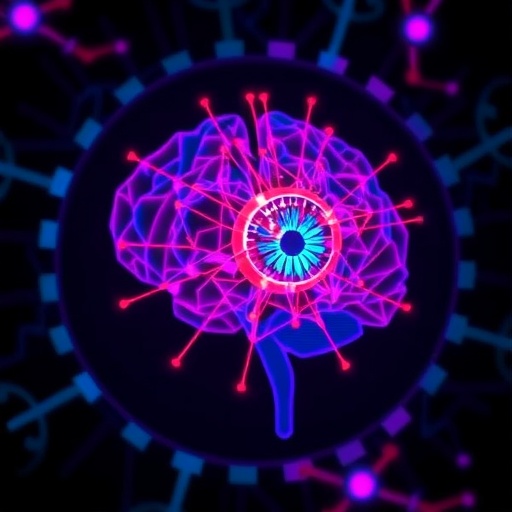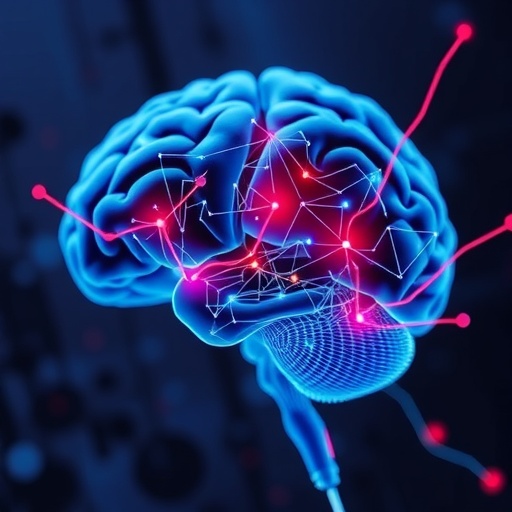In a groundbreaking study presented by the MULTI Consortium, researchers have uncovered intricate relationships among the brain, heart, and eyes, delineating a previously unrecognized axis that interlinks these vital organs through advanced multi-organ imaging, genetics, and proteomics. This innovative research, published in Nature Biomedical Engineering, opens new avenues for understanding how these organs communicate and influence each other, potentially revolutionizing approaches to medical diagnostics and treatments.
The study’s groundbreaking findings stem from a combination of cutting-edge imaging technologies and sophisticated genetic analysis. Researchers utilized advanced imaging modalities, including magnetic resonance imaging (MRI) and positron emission tomography (PET), to visualize and analyze the functional interplay between the brain, heart, and eyes. These imaging techniques afforded unprecedented insights into how these organs operate not in isolation, but as interconnected components of a holistic system. The implications of this research are vast, suggesting that traditional compartmentalized views of organ functions and interdependencies may need significant reconsideration.
Genetic analyses further elucidated the molecular interactions occurring within this brain-heart-eye triad. By analyzing genetic markers associated with cardiac, ophthalmic, and neurological health, the researchers were able to identify distinct patterns that suggest common pathways and triggers for diseases affecting these organs. This genetic overlap indicates that conditions such as retinopathy, cardiac arrhythmias, and neurological disorders may share underlying genetic factors, pointing towards the necessity of integrated treatment strategies rather than isolated interventions.
The proteomics aspect of the study brought additional depth to the findings. By assessing protein expression levels across these organs, scientists discovered specific biomarkers that are not only indicative of their individual health status but are also reflective of systemic conditions affecting multiple organ systems. This proteomic profiling enhances the understanding of disease mechanisms and may pave the way towards novel biomarkers for early diagnosis and more tailored therapeutic strategies.
The alignment of imaging genetics and proteomics in this study highlights the importance of a multi-faceted approach to biomedical research. The research team utilized a holistic methodology that encompassed diverse scientific disciplines, underscoring how interdisciplinary collaboration can lead to enhanced understanding and significant medical breakthroughs. By bridging the gaps traditionally present in biomedical research, the MULTI Consortium aims to foster a new paradigm where the complexity of human physiology is embraced and independently investigated.
Moreover, the findings challenge existing paradigms which often view the brain, heart, and eyes as separately functioning organs. The implications for patient care are profound; it may no longer be sufficient to treat conditions affecting one organ without considering the health of the others. As healthcare systems increasingly move towards personalized medicine, understanding these interconnections is critical to developing comprehensive treatment plans that consider the patient’s overall organ health.
As the study progresses through peer review, the anticipation surrounding its findings only grows. Researchers anticipate that this integrated organ-system perspective can inspire new research fields focusing on the interconnectivity of organ systems. By promoting discussions around these relationships, future studies could further unravel the complexities of human physiology, ultimately leading to enhanced preventive strategies and therapeutic interventions.
The study does not only hold importance for clinicians and researchers; it may also significantly impact public health policies. As we strive to create a holistic healthcare framework, understanding how various organs influence each other could inform strategies to enhance overall population health. For instance, public health initiatives that promote cardiovascular health may also need to consider visual health and neurological wellness, emphasizing the need for cross-disciplinary health education and awareness.
Potential clinical applications stemming from these findings could revolutionize how diseases are diagnosed and treated. For example, implementing routine eye examinations for patients with known cardiovascular diseases could lead to early detection of related complications and vice versa. The overarching theme of interconnectedness among these vital organs emphasizes the need for a more comprehensive understanding of patient care that extends beyond conventional specialties.
Ethical considerations surrounding genetic research also emerge in the wake of this study. As the researchers explored genetic markers, questions regarding privacy, consent, and data utilization naturally arise. Ensuring that ethical guidelines are followed is paramount, especially as healthcare shifts towards increasingly personalized approaches. The balance between innovation and ethical responsibility becomes crucial to maintaining public trust as new technologies uncover deeper insights into the complexities of human health.
As the research catches wind in the scientific community, further exploration and validation will be anticipated. Measuring the replicability of these findings across diverse populations is essential to ascertain their robustness. Subsequent studies may serve to clarify these relationships, perhaps expanding the triad studied to incorporate additional organs such as the liver or kidneys, or investigating gender-specific nuances in brain-heart-eye dynamics.
The global health landscape is at a turning point, with ongoing challenges such as aging populations and increasing incidences of chronic diseases; this study is highly timely. The national and global implications for healthcare systems could be vast. Policymakers might consider this research when making decisions about funding and prioritizing healthcare services, encouraging an interdisciplinary approach to health promotion and disease prevention.
Overall, the discovery of the brain-heart-eye axis offers profound insight into the interconnected nature of human physiology and opens up new pathways for research that could transform healthcare. As we continue to explore these relationships, it has never been more crucial for the scientific community to work collaboratively across disciplines, ensuring that advancements lead to meaningful benefits for patients and society as a whole.
Through this research, we are reminded of the complexity and interconnectedness that defines health, illustrating that every aspect of wellness is intricately woven into the fabric of our biology. As we venture further into this new realm of understanding, it is essential to remain vigilant and compassionate, crafting a healthcare environment that reflects the dynamism of the human body and the individual needs of patients.
Ultimately, the MULTI Consortium is pioneering a shift in how we conceptualize organ health through their illuminating findings, urging us to reevaluate how we approach diagnosis, treatment, and prevention in the interconnected world of human physiology.
Subject of Research: Brain-heart-eye axis and its interconnections.
Article Title: Brain–heart–eye axis revealed by multi-organ imaging genetics and proteomics.
Article References:
The MULTI Consortium., Boquet-Pujadas, A., Anagnostakis, F. et al. Brain–heart–eye axis revealed by multi-organ imaging genetics and proteomics.
Nat. Biomed. Eng (2025). https://doi.org/10.1038/s41551-025-01506-5
Image Credits: AI Generated
DOI: https://doi.org/10.1038/s41551-025-01506-5
Keywords: Brain-heart-eye axis, multi-organ imaging, genetics, proteomics, biomedical engineering.
Tags: advanced imaging modalitiesbrain-heart-eye connectionfunctional interplay of organsgenetic analysis in medicinegenetic markers for organ diseasesholistic health perspectivesimplications for medical diagnosticsinterdependencies of vital organsmolecular interactions in healthmulti-organ imaging technologiesNature Biomedical Engineering studyrevolutionary approaches to treatments





